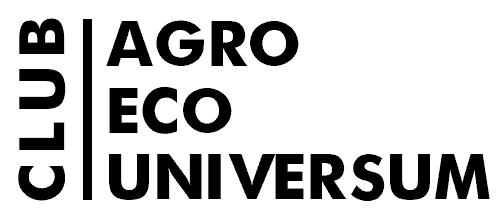Water scarcity requires careful monitoring of water quality
Today, the population of many countries and large regions suffers from a lack of water resources. Reasonable forecasts show that in many countries the shortage of fresh water will increase in the future and become even more noticeable. (fig 1).

Figure 1. Physical water scarcity (WS) – Middle of the Road Scenario for each grid cell (0.5o grid or ~ 50km by 50km). Source: Burek et al., 2016.
Freshwater resources and population densities are unevenly distributed worldwide. As a result, water demands already exceed supplies in regions with more than 40% of the world’s population (Bennett, 2000). Limited access to freshwater already impacts the lifestyle and development opportunities in water scarce areas (Qadir et al., 2007). By the year 2025, as much as 60% of the global population may suffer physical water scarcity (Pimentel et al., 1999; Rijsberman, 2006).
With about 70% of the world’s freshwater currently used for irrigation, agriculture remains the largest user of water. In some countries, irrigation accounts for more than 95% of the developed water supply (FAO-AQUASTAT, 2012). The competition for fresh-water allocation already exists among municipal, industrial, and agricultural sectors, particularly in water scarce areas. As a result, agriculture has been yielding its share gradually to non-agricultural uses (Qadir et al., 2010). As the use of freshwater for non-agricultural activities generates wastewater, the volume of wastewater has been increasing, commensurate with rapidly growing population, urbanization, improved living conditions, and economic development (Asano et al., 2007).
The combination of less freshwater allocation to agriculture, more freshwater allocation to non-agricultural sectors, and increasing volumes of urban wastewater, is expected to continue and intensify, particularly in water scarce countries. Therefore, agriculture in these countries will increasingly rely on alternative water resources, such as wastewater generated by non-agricultural activities in urban and peri-urban areas. Most small-scale farmers in urban and peri-urban areas of water scarce countries already depend on wastewater to irrigate a range of crops, often as they have no alternative sources of reliable irrigation water (Drechsel et al., 2010).
Information describing current levels of wastewater generation, treatment, and use is crucially important for policy makers, researchers, and practitioners, as well as public institutions, to develop national action plans aiming at wastewater treatment and productive use of waste-water in agriculture, aquaculture, and agroforestry systems for environment conservation and health protection. Country level information aggregated at the regional and global levels also is needed to identify the gaps in pertinent data availability and assess the potential of wastewater in food, feed, and fish production at the regional and global scales.
Figure 2 depicts the proportions of wastewater receiving treatment, by country. Using the World Bank, 2012; World Bank (2012) classification of countries for economic categories (low-income, lower-middle-income, upper-middle-income, and high-income), we find that high-income countries on average treat 70% of the generated wastewater, followed by upper-middle-income countries (38%), lower-middle-income countries (28%), and low-income countries where only 8% of the wastewater generated is treated (Sato et al., 2013).

Figure 2. The ratio of treated wastewater to total generated wastewater (expressed as a proportion) in selected countries. Source: Sato et al., 2013; Based on data from FAO-AQUASTAT (2012), EUROSTAT (2012).
Links
- Asano, T., Burton, F.L., Leverenz, H., Tsuchihashi, R., Tchobanoglous, G., 2007. Water Reuse: Issues, Technologies, and Applications. McGraw-Hill Professional, New York.
- Bennett A. J. Environmental consequences of increasing production: some current perspectives //Agriculture, ecosystems & environment. – 2000. – Т. 82. – №. 1-3. – С. 89-95.
- Burek P. et al. Water futures and solution: fast track initiative (final report) //IIASA, Laxenburg, Austria. – 2016.
- Drechsel, P., Scott, C.A., Raschid-Sally, L., Redwood, M., Bahri, A., 2010. Wastewater Irrigation and Health: Assessing and Mitigating Risk in Low-Income Countries, Earthscan-International Development Research Centre (IDRC)-International Water Management Institute (IWMI).
- FAO-AQUASTAT, 2012. Global information system on water and agriculture.http://www.fao.org/nr/water/aquastat/main/index.stm.
- Pimentel D. et al. Will limits of the Earth’s resources control human numbers? //Environment, Development and Sustainability. – 1999. – Т. 1. – №. 1. – С. 19-39.
- Qadir M. et al. Non-conventional water resources and opportunities for water augmentation to achieve food security in water scarce countries //Agricultural water management. – 2007. – Т. 87. – №. 1. – С. 2-22.
- Rijsberman F. R. Water scarcity: fact or fiction? //Agricultural water management. – 2006. – Т. 80. – №. 1-3. – С. 5-22.
- Sato T. et al. Global, regional, and country level need for data on wastewater generation, treatment, and use //Agricultural Water Management. – 2013. – Т. 130. – С. 1-13.
- WB, 2012. The World Bank data; GNI per capita, Atlas method. http://data.worldbank.org/indicator/NY.GDP.PCAP.CD.
